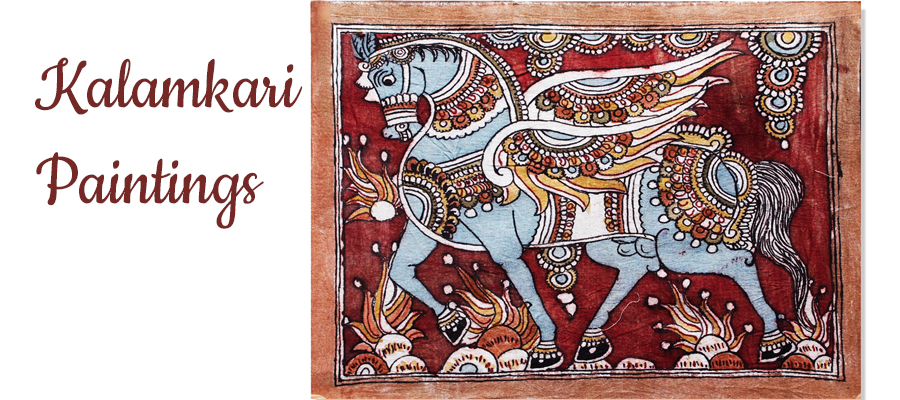
Kalamkari is the art of painting cotton fabrics with a kalam i.e. pen, which is a sharp pointed pierced bamboo that regulates flow of colour on the fabric. Kalamkari art is unique in its use of colour as a medium to portray mythological characters in the form of paintings. The name Kalamkari originates from Persian words - qalam (pen) and kari (craftmanship), and the word literally means drawing with a pen. The popularity of this exquisite form of paintings crossed the shores of the country during the 17th and 18th centuries. Andhra Pradesh is famous all over for this form of art. The major painting forms are Srikalahasthi of Chittoor district, and Machilipatnam Kalamkari of Krishna district.
Srikalahasthi Kalamkari represents a style of Kalamkari work, related to the dyed hand-painting of fabrics, produced mainly in Srikalahasthi town of Chittoor district in Andhra Pradesh. This process approximately requires 8 to 10 craftsmen for creating one yardage of Kalamkari fabric. The craft of Kalamkari has wonderfully imbibed the rich and varied design elements reflecting the impressions of different cultures, and a beautiful synthesis of the Hindu and Muslim cultures.
Lepakshi, the Andhra Pradesh Handicrafts Development Corporation has been promoting the historical art by training skilled artisans and improving revenue generation through more exports. Originating in religious impulse, the Srikalahasthi style of Kalamkari is used widely to narrate stories from the epics through various means such as scrolls, temple hangings, as well as chariot banners. While Srikalahasthi paintings are based on the brush, the Machilipatnam style makes use of block-printing technique.

